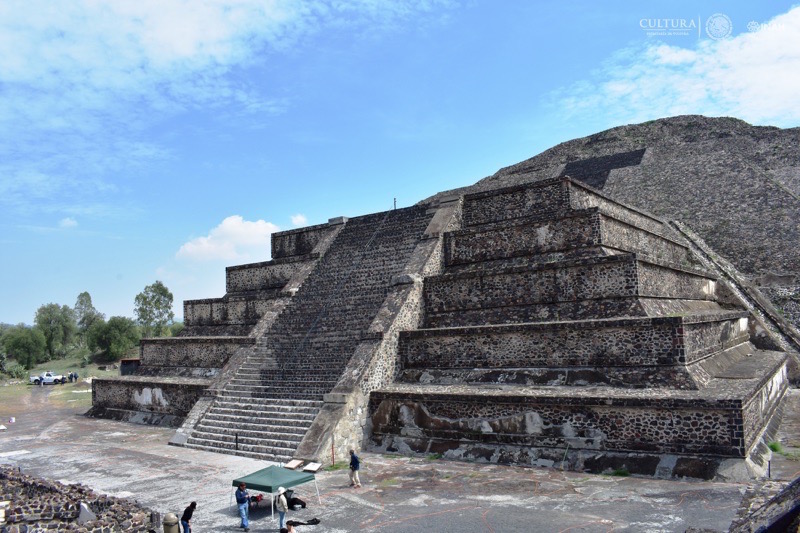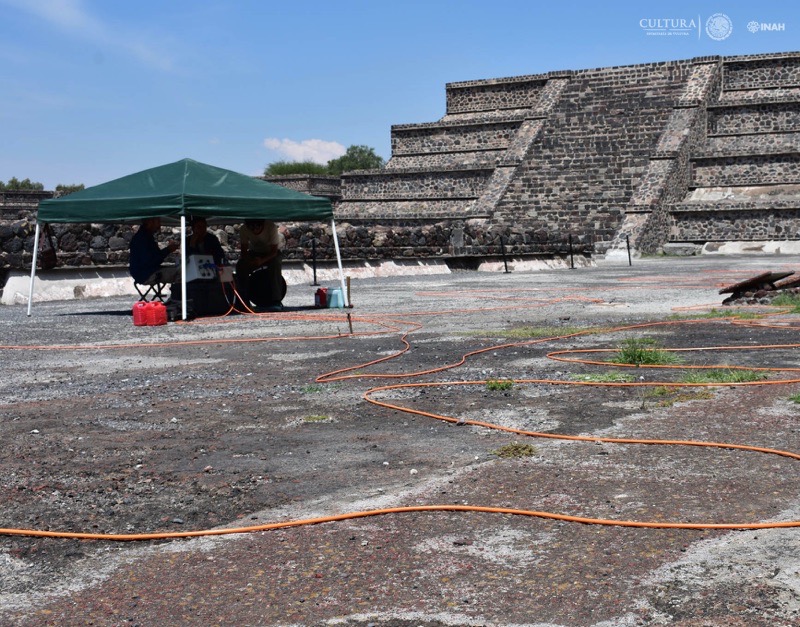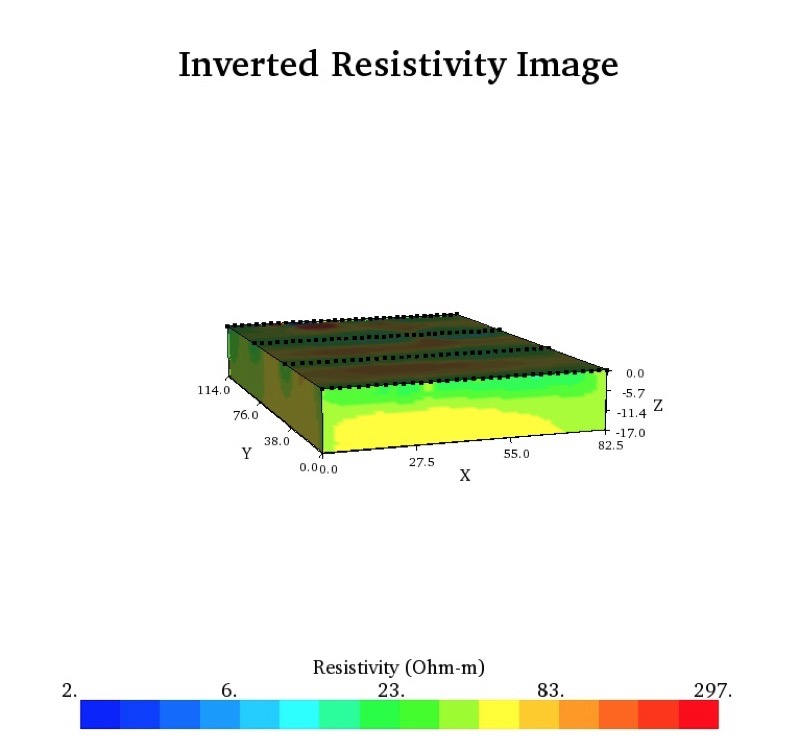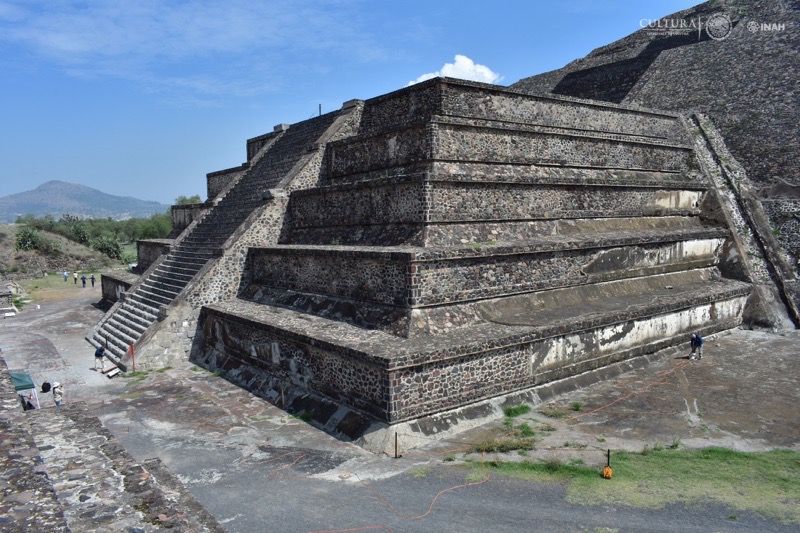Secret Tunnel Discovered Beneath the Ancient Temple of the Moon

A secret passageway discovered near the Pyramid of the Moon in the ancient city of Teotihuacan may have been a way for the people there to emulate the underworld, archaeologists said.
Scans of what appears to be a hidden underground tunnel show that the cavity extends from the center of the Plaza of the Moon to the Pyramid of the Moon, reported archaeologists from Mexico's National Institute of Anthropology and History (INAH) and the National Autonomous University of Mexico.
The finding confirms that the ancient people of Teotihuacan dug tunnels under their monuments, possibly to emulate the underworld — a place where life, plants and food were thought to be created, said archaeologist Verónica Ortega, director of the Integral Conservation Project of the Plaza de la Luna. [In Photos: Enormous Ancient Mexican Temple]
The Pyramid of the Moon was built in seven different stages, from 100 B.C. to A.D. 450, the researchers said. It began as a small platform and eventually grew into a 150-foot-tall (46 meters) pyramid that held tombs filled with human and animal sacrifices, Live Science previously reported.
Researchers found the tunnel in early June by using an electrical tomography scan, the INAH reported. To implement the scan, the researchers injected electric current into the subsoil and measured the resistance of the different materials found there. Then, they used the resulting data to create preliminary 2D and 3D models.

These models indicated that the straight tunnel is about 30 feet (10 m) below ground, the researchers said.
The tunnel likely served as a place for rituals — possibly to carry out ceremonies for the different agricultural cycles — and will help experts understand more about the culture's symbolic discourse, the researchers said.
Sign up for the Live Science daily newsletter now
Get the world’s most fascinating discoveries delivered straight to your inbox.

Treasure hunt
The newfound tunnel isn't the only one in Teotihuacan: The Pyramid of the Sun and the Temple of the Feathered Serpent also have underground conduits, the researchers said. It's possible that the region's ancient leaders used the symbolism surrounding these tunnels as a way to unite the more than 100,000 local and foreign people who lived there, Ortega said.
Researchers said they hope to explore the newfound tunnel soon and determine when it was built.
When the tunnel under the Pyramid of the Sun was discovered in the 1970s, archaeologists were disappointed to learn that it had been looted, likely by the Mexica (the indigenous people in the Valley of Mexico) in the early 16th century, the researchers said. It's possible that the newfound tunnel could provide information about the Teotihuacan people that was taken from the cavity under the Pyramid of the sun, the researchers said.
Furthermore, the study of the newfound tunnel could reveal whether there are more tunnels around the pyramid, as archaeologists detected some alterations in the subsoil last year, particularly in large pits and channels that were likely used for rituals.
"These elements indicate that before the construction of the pyramid, there was a sacralization [performing sacred rites throughout it] of the space, since green megalithic stones have been found in front of the building," Ortega said. " [These stones] were very valuable for Teotihuacan… although at the moment it is unknown if they have any relation with the possible tunnel."

Original article on Live Science.

Laura is the archaeology and Life's Little Mysteries editor at Live Science. She also reports on general science, including paleontology. Her work has appeared in The New York Times, Scholastic, Popular Science and Spectrum, a site on autism research. She has won multiple awards from the Society of Professional Journalists and the Washington Newspaper Publishers Association for her reporting at a weekly newspaper near Seattle. Laura holds a bachelor's degree in English literature and psychology from Washington University in St. Louis and a master's degree in science writing from NYU.









